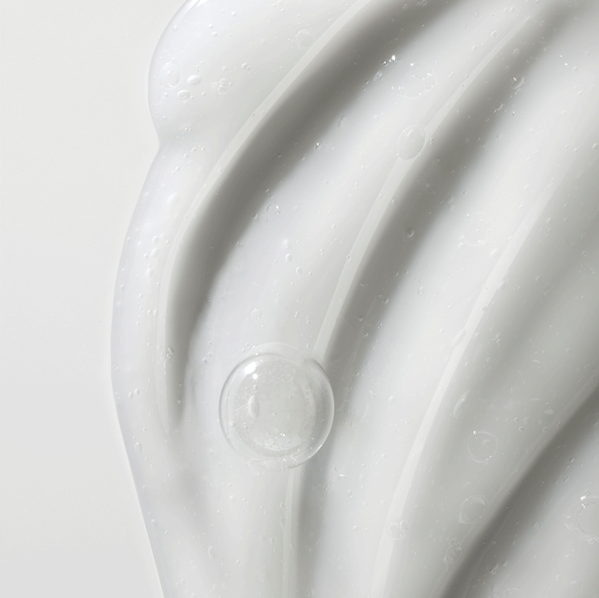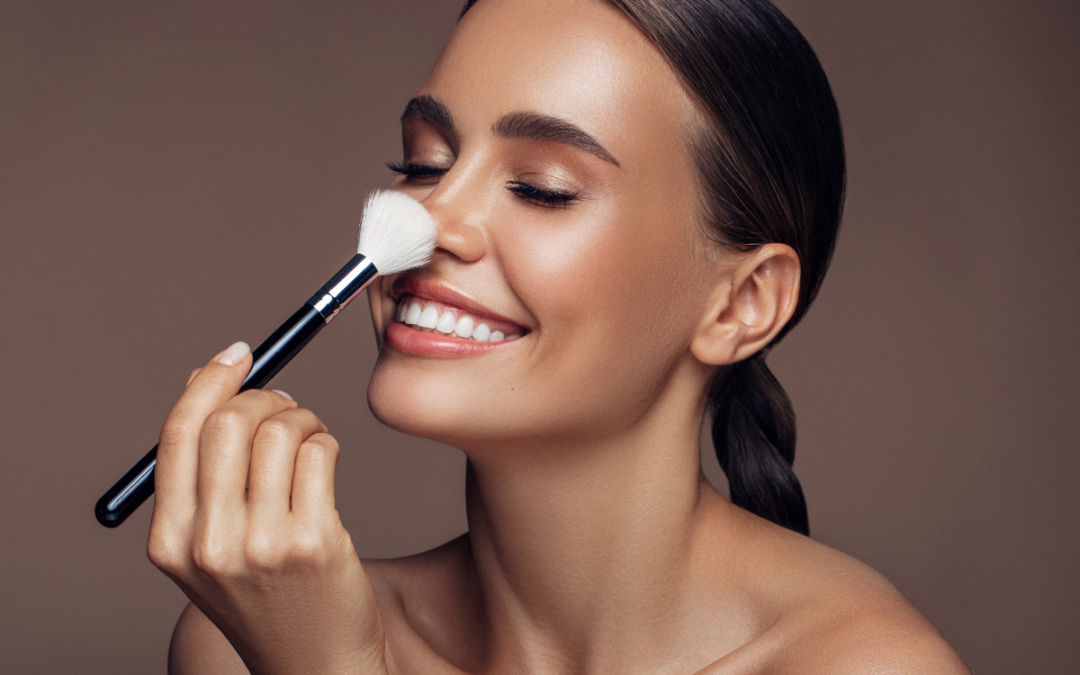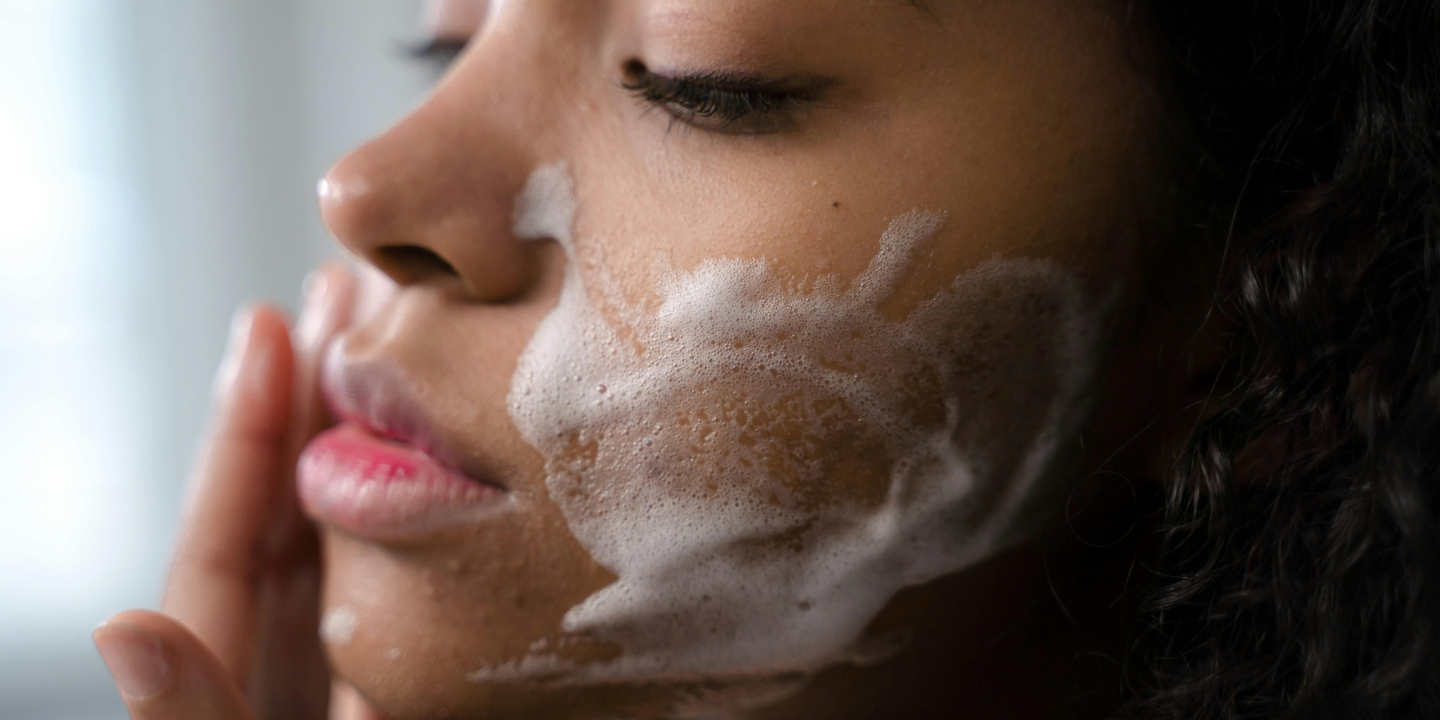Caring for your skin in your 50s and beyond is all about embracing change with grace and wisdom. At Lighthouse, we understand that skincare in your 50s can seem daunting at first, as there’s a lot of change to deal with all at once. But don’t worry: we’re here to guide you through these transitions with expert advice and, as always, the very best dermatologist-approved product recommendations.
As we journey through life, our skin tells a story. From the first hint of fine lines in our 20s to the more pronounced expressions of character in our 40s, each decade brings new nuances. By the time we reach our 50s and beyond, these changes become more significant, reflecting a lifetime of experiences, environmental factors and natural physiological shifts. For some, this change can be upsetting: we’re here to tell you that it doesn’t have to be.
The beautiful truth is that with the right knowledge and a dedicated skincare routine in your 50s, you can continue to nurture your skin, addressing concerns like deeper wrinkles, sagging and age spots with confidence.
Our view? You don’t have to consider invasive treatments to achieve remarkable results. This guide will walk you through the essentials of a skincare regimen tailored for mature skin, helping you embrace your radiance at every age.
Ready to discover how to truly nourish your skin? Let’s dive in.
Understanding Your Skin in Your 50s and Beyond
First, let’s get to grips with what’s going on with your skin by the time you hit your 50s. As you’ll no doubt know, this is when the subtle signs of aging often become more apparent.
You might notice deeper wrinkles, especially around the eyes and mouth and perhaps a more pronounced appearance of forehead lines and frown lines. This is largely due to a significant decline in collagen and elastin production — the vital proteins that provide skin with its firmness and elasticity. Over time, our skin’s natural ability to retain moisture and regenerate also wanes, leading to increased dryness and a less plump appearance.
A significant factor contributing to these changes in your skincare 50s is the shift in your hormones, particularly the decline in estrogen during perimenopause and menopause. This reduction in estrogen directly impacts collagen and elastin synthesis, leading to thinner, more delicate skin that is more prone to sagging and wrinkles. We’ve explored the fascinating connection between menopause and your skin in more detail here.
Additionally, sun damage accumulated over decades plays a crucial role. Years of unprotected sun exposure can lead to uneven skin tone, age spots (also known as sun spots or liver spots), and a further deepening of existing lines. Understanding these underlying changes is the first step toward building an effective “skincare in 50s” strategy.
The Pillars of Skincare for Mature Skin
Building a targeted skincare routine in your 50s revolves around a few key areas: replenishing lost moisture, boosting cellular renewal, protecting against environmental damage and truly supporting your skin’s natural structure.
Anti-Aging Powerhouses: Serums, Creams, and Treatments
When it comes to addressing the visible signs of aging, incorporating potent anti-aging products is key. These formulations are specifically designed with ingredients that work to improve skin texture, reduce the appearance of wrinkles and enhance overall radiance. Let’s break down what these are and what to look out for in skincare products.
Retinoids (Vitamin A derivatives)
Often hailed as the gold standard in anti-aging, retinoids (like retinol) are incredibly effective. They work by stimulating collagen production and accelerating cell turnover, which helps to smooth out fine lines and wrinkles, improve skin tone and reduce hyperpigmentation. If you’re new to retinoids, start with a lower concentration and gradually increase usage as your skin adapts to avoid irritation. We love Revision Complete 0.5, a technologically advanced anti-aging serum for reducing the appearance of fine lines and wrinkles while brightening and evening skin tone.

Peptides
These small chains of amino acids are the building blocks of proteins like collagen and elastin. When applied topically, peptides can signal your skin to produce more collagen, leading to firmer, more elastic skin. Find out more about peptides, plus our recommended products, here.
Hyaluronic Acid
While often highlighted for hydration (more on that below), hyaluronic acid also plays a crucial role in plumping the skin and reducing the appearance of wrinkles by drawing moisture into the skin. The Hyalu B5 Hyaluronic Acid Serum from La Roche Posay is a firm favorite.
Antioxidants (Vitamin C, E, Ferulic Acid)
These powerful ingredients combat free radicals, which are unstable molecules that can damage skin cells and accelerate aging. Vitamin C, in particular, is excellent for brightening the complexion, reducing age spots, and boosting collagen synthesis. The Revision C+ Correcting Complex 30% contains a powerful blend of antioxidants known as MelaPATH technology, revealing a brilliant glow, a more even skin tone and a more youthful appearance.

Growth Factors
These are naturally occurring proteins that act as messengers, telling your skin cells to grow, repair and produce more collagen and elastin. In skincare, they are often bio-engineered or derived from human or plant sources to help revitalize and strengthen the skin’s structure. Topical growth factors can help to repair and regenerate skin cells, leading to improved elasticity and a reduction in wrinkles.
Look for concentrated serums that deliver a high dose of these active ingredients, and follow with rich creams designed to lock in moisture and further nourish the skin. Night creams, in particular, are formulated to support the skin’s natural regeneration process while you sleep. Next up, let’s talk about the importance of keeping your skin beautifully plump.
The Crucial Role of Moisturization and Hydration

One of the most significant challenges for skin in your 50s is maintaining adequate moisture levels. As we age, our skin’s natural barrier can become compromised, leading to increased dryness, flakiness and a more pronounced appearance of fine lines and wrinkles. Dehydrated skin also feels less supple and can appear dull. And we certainly don’t want that, do we?
Firstly, it’s important to understand the difference between hydration and moisturization, as both are absolutely essential for mature skin:
-
Hydration is about increasing the water content within your skin cells, making them plump and supple. Products focused on hydration often contain humectants.
-
Moisturization is about creating a protective barrier on the skin's surface to prevent that water from escaping. These products, often called moisturizers, contain emollients and occlusives.
Here’s how these key ingredients plump up your skin
Humectants (for hydration)
These are ingredients that act like magnets for water, drawing moisture from the air into your skin's outer layers. Look out for:
-
Hyaluronic Acid — this superstar humectant can hold up to 1,000 times its weight in water, making it incredibly effective at drawing moisture into your skin, plumping it from within. Incorporate a hyaluronic acid serum into your routine, applied to damp skin for best results.
-
Glycerin — another excellent and widely used humectant that attracts water to the skin.
Emollients and Occlusives (for moisturization)
These ingredients work to seal in the hydration and create a smooth, soft feeling on the skin. Check the ingredients list for:
-
Ceramides — these are lipids (fats) that are naturally found in your skin barrier. Replenishing ceramides helps to strengthen the skin's protective barrier, preventing moisture loss and protecting against environmental aggressors.
-
Rich Emollients and Occlusives — ingredients like shea butter, squalane and various botanical oils create a protective layer on the skin's surface, preventing water evaporation and keeping the skin soft and smooth. Look for these in your richer creams and lotions.
Apply your hydrating serums (with humectants) first, ideally to damp skin, and then follow immediately with your moisturizing cream (containing emollients and occlusives) to lock in all the beneficial ingredients. Don’t forget your neck and décolletage, as these areas often show signs of aging just as readily as your face.
Sun Protection: Your Non-Negotiable Daily Essential
If there’s one single most impactful step you can take to protect your skin, it’s consistent sun protection. Sun damage is a leading cause of premature aging, contributing to wrinkles, age spots and loss of elasticity. Even if you’ve been diligent about sun protection throughout your life, it’s never too late to reinforce this habit. For skin in its 50s and beyond, preventing further damage is paramount.
-
Broad-Spectrum Sunscreen — always choose a broad-spectrum sunscreen with an SPF of 30 or higher, which protects against both UVA (aging) and UVB (burning) rays.
-
Daily Application — apply sunscreen every single day, regardless of the weather or whether you’re indoors or out. UVA rays can reach you through clouds and windows.
-
Reapplication — reapply sunscreen every two hours if you’re outdoors, swimming or sweating.
-
Physical Sunscreens — look for sunscreens containing zinc oxide and titanium dioxide. These physical blockers sit on the skin’s surface and reflect UV radiation, making them a great choice for sensitive or mature skin.
Make sunscreen the final step in your morning skincare routine before applying makeup. Think of it as your daily shield against the elements. Explore our recommended sunscreen products here.
Addressing Specific Concerns in Your 50s
Beyond this general approach to nourishing and caring for aging skin, let’s look at some specific concerns common in your 50s:
-
Deeper Wrinkles: a combination of retinoids, peptides, and hyaluronic acid can significantly improve the appearance of deeper lines. Consistency is key. We’ve written a blog about how to combat forehead wrinkles here.
-
Sagging Skin: this is often due to the breakdown of collagen and elastin. Ingredients like peptides, growth factors, and certain forms of Vitamin C can help improve firmness. Targeted facial exercises or massage tools can also complement your routine by improving circulation and muscle tone.
-
Age Spots (Hyperpigmentation): these dark spots are a result of years of sun exposure. Ingredients like Vitamin C, niacinamide, alpha arbutin, and specific exfoliants can help to lighten and fade these spots over time. Consistent sun protection is vital to prevent new ones from forming.
-
Loss of Elasticity: this goes hand-in-hand with sagging skin. Focus on ingredients that support collagen and elastin production, such as retinoids, peptides and antioxidants.
Remember, patience and consistency are your greatest allies. Significant improvements take time, typically several weeks to months, as your skin regenerates and responds to the active ingredients.
Considering Professional Skincare Treatments
While a consistent at-home routine is foundational and can make a huge difference, there are times when calling in the professionals can offer an additional boost and target specific concerns more intensively. These treatments, performed by qualified dermatologists or estheticians, can complement your daily routine and help you achieve enhanced results without resorting to surgical options.
Some popular non-surgical treatments that women in their 50s often consider include:
Chemical Peels
These involve applying a solution to the skin to exfoliate the top layers, revealing fresher, smoother skin underneath. They can improve skin tone, texture, and reduce the appearance of fine lines and age spots.
Microdermabrasion
A minimally invasive procedure that uses a specialized applicator to gently sand away the thick outer layer of the skin, improving texture, tone and reducing sun damage.
Microneedling
This treatment uses tiny needles to create controlled micro-injuries in the skin, stimulating collagen and elastin production and improving skin texture, firmness and the appearance of scars and wrinkles.
Laser Therapy
Various types of lasers can target specific concerns like hyperpigmentation, fine lines and overall skin rejuvenation by stimulating collagen and promoting cell turnover.
Dermal Fillers
While not a surgical treatment, fillers can be injected to add volume, plump up deep wrinkles and restore youthful contours to the face. These are temporary and require repeat treatments.
Botulinum Toxin (Botox)
Again, not a surgical treatment, Botox injections relax muscles that cause dynamic wrinkles (those that appear with facial expressions), reducing the appearance of lines like frown lines and crow’s feet.
Whatever your concern, we recommend having a chat with one of our skincare professionals to determine which treatments, if any, are right for you.
Embracing Your Radiance
Your 50s and beyond are a time of wisdom, confidence and maybe even energy. If you’re a parent, it’s likely a time that you can finally start dedicating to yourself now that the children have grown up. By understanding the unique needs of your skin and embracing a thoughtful, consistent skincare routine in your 50s, you can continue to look and feel your best. Remember, healthy skin isn’t about erasing every line, but about nurturing your skin’s health, vitality and natural radiance.
At Lighthouse, we believe great skincare starts with knowledge. That’s why we’re dedicated to providing expert insights, skincare guides, and science-backed solutions — so you can make the best choices for your skin, no matter what your age.
Ready to find your perfect routine? Take our personalized skincare quiz today and discover the products tailored specifically for your needs.





